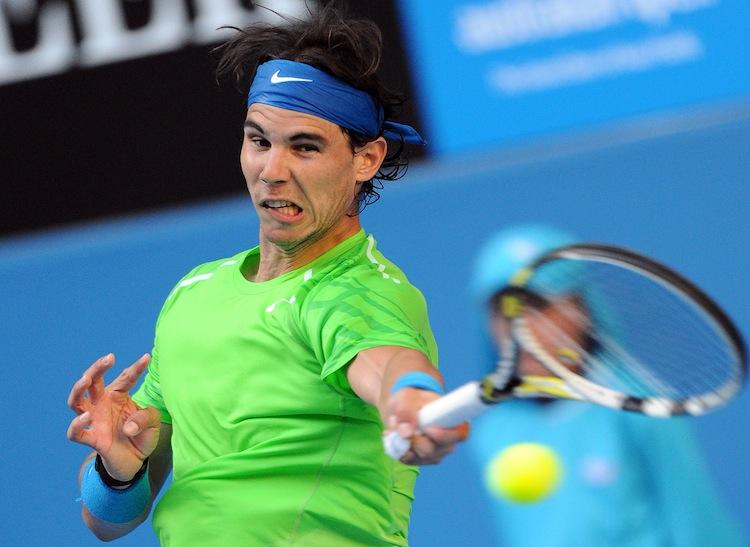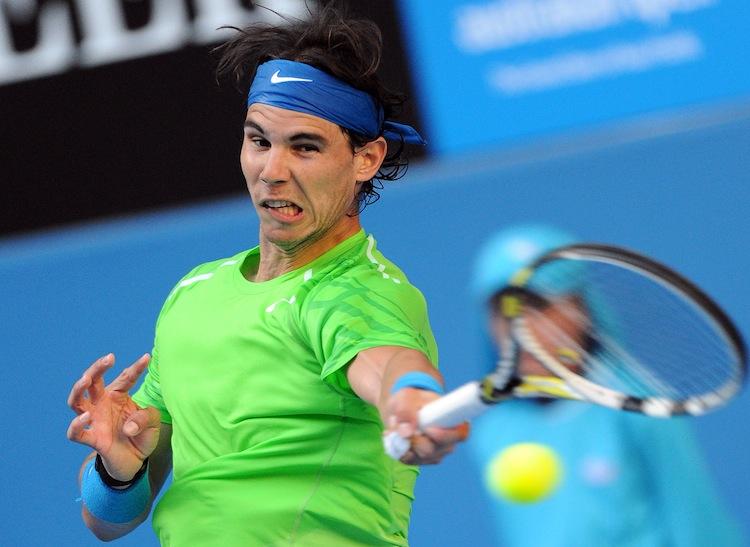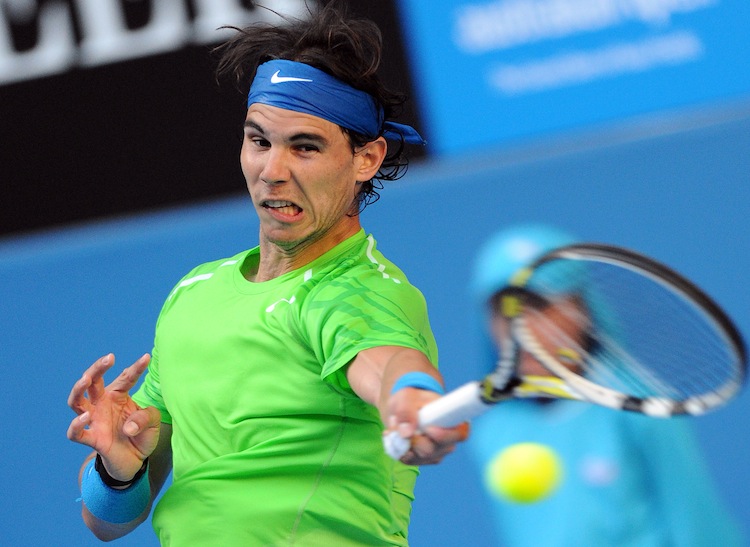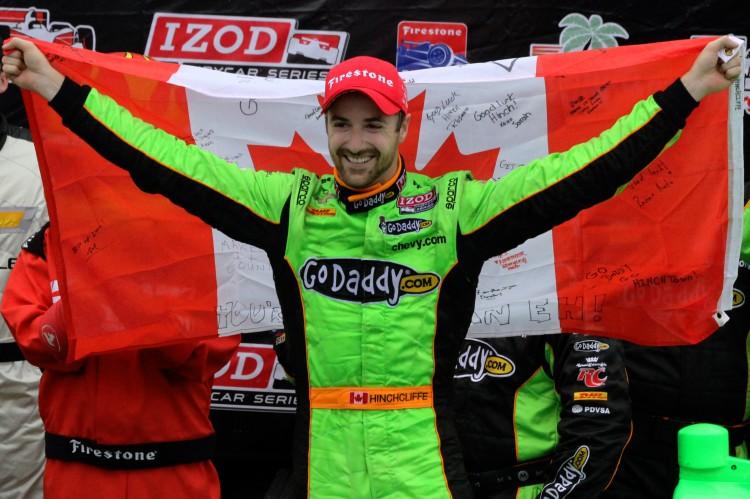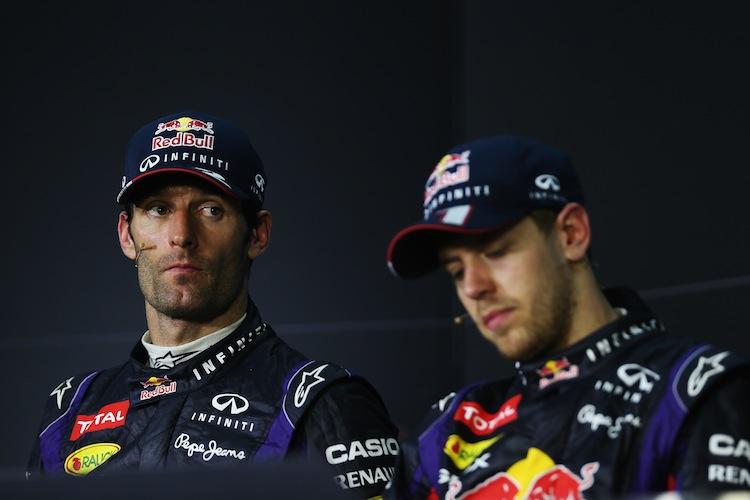Rafael Nadal, arguably the best tennis player in the game, has had some winning efforts cut short by knee injuries. Thus fans were concerned when he showed up at his first match of the 2012 Australian Open with his right knee heavily wrapped (which it hadn’t been in practice the day before).
Despite the bandages, Nadal played powerfully, defeating Alex Kuznetsov 6–4, 6–1, 6–1, while putting on a fine display of the skills and talent that have earned him his reputation as one of the game’s best.
After the match, Nadal discussed his knee situation in some detail.
Nadal told ESPN that after a fantastic week of practice with absolutely no pain, his knee suddenly locked up on him the afternoon before the first match. Nadal said he felt a slight cracking in the knee, so he stood up to flex it. When he did, “the knee stays with an unbelievable pain completely straight. I really couldn’t move the knee—I have no movement on the knee.”
Worried that he might have to withdraw, Nadal spent the time when he should have been preparing mentally, going to various medical facilities, while the Australian Open organizers hustled to line up doctors’ visits for him.
“I have a hard afternoon,” Nadal said. “I did all the tests. Came here for ultrasound. Went to hospital for MRI. I just can say thank you very much to the tournament for all the facilities give to me on a Sunday. Not easy to find places, and they make fantastic work for me.
“Yesterday during the evening I wasn’t hundred percent sure I would have chance to play, because with the movement of that knee I felt that I will not be able to play.”
The MRI showed no new damage; Nadal said that the best diagnosis was that a tendon got pinched between two bones.
The 25-year-old Spaniard spent the night in great pain and all the next day in treatment, loading up on anti-inflamatories in hopes he would be able to limp through his opening-round match. When it came time to take the court, the pain had mysteriously disappeared.
“I started the match with a little bit of scare at the beginning, and nervous because I was really disappointed yesterday. But, you know, after the first 10 games that was scare, I started to play with normal conditions,” Nadal told ESPN.
“The best thing is I felt the knee very well. So is something that I really don’t understand why everything happened, but I am really happy that today I was ready to play and I played a fantastic match.”
Nadal was mystified as to why his knee stopped working while he was sitting in a chair, but he’s obviously glad he recovered, and seemed optimistic about his chances of surviving two weeks of tough hard-court tennis.
“I have good hopes. You can have an injury playing an aggressive movement—but sitting on a chair, you cannot have injury. So that’s why I really keep not understand what’s going on. But I understand when the knee comes back to the right place, so I was much more scared about the first match than the rest, because today now I have 48 hours to the next match.
“I am really confident that having the worst feeling that I ever had in my knee yesterday and today was able to play. I have fantastic hope that going to happen the same for after tomorrow.”
Nadal said earlier in the week that players might consider “strong action”—perhaps a strike?—over the extremely busy season schedule—for a player who goes as hard as Nadal, the packed schedule could contribute to shortening his career. This knee injury scare points up the problem—better to have Nadal playing fewer tournaments less frequently for more years than to lose the game’s greatest player far too soon.
